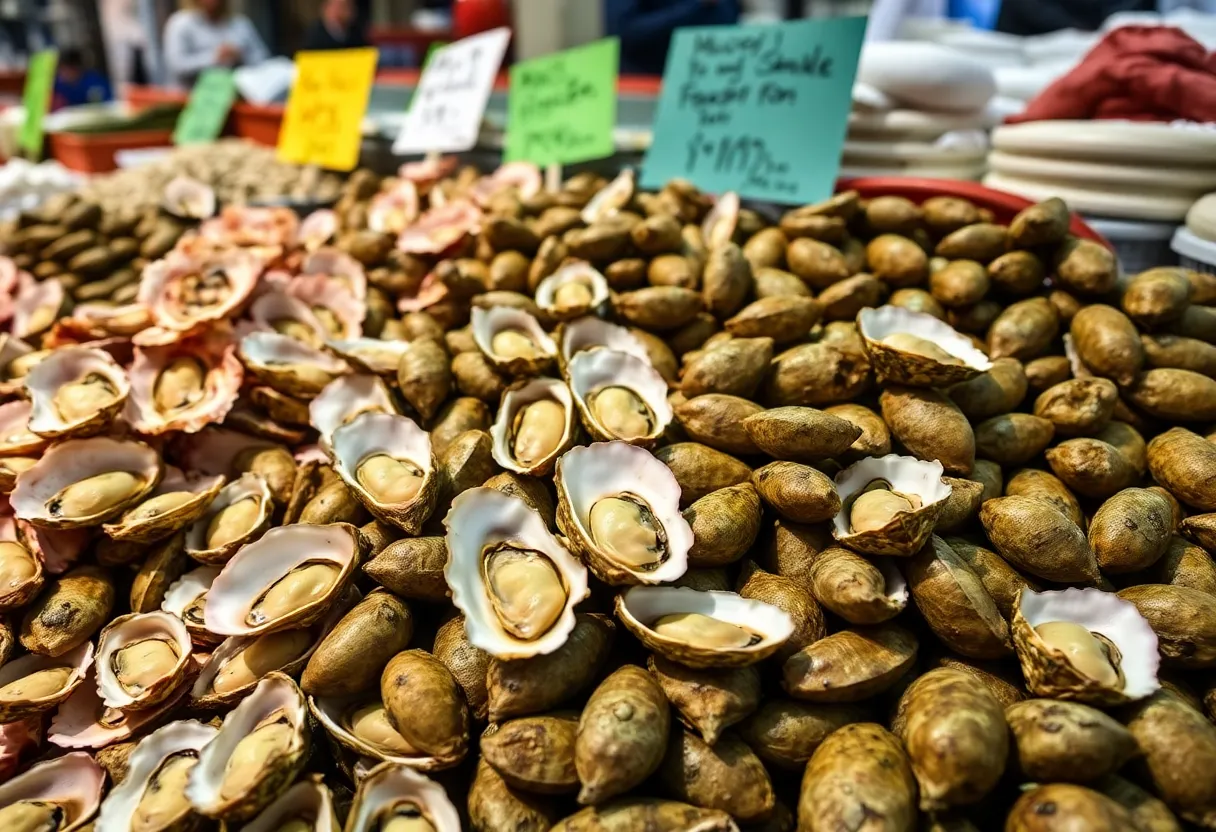Fishtown Seafood
Fishtown Seafood is a Philadelphia-based seafood retailer and wholesaler with three locations in Philadelphia and Haddonfield, New Jersey. Established with a focus on providing quality seafood, the business primarily sources U.S. seafood from fish farms and relies heavily on Canadian suppliers for oysters, which constitute about 60-70% of their oyster supply. Throughout its history, Fishtown Seafood has faced challenges due to fluctuating tariffs and policies affecting Canadian imports, particularly oysters. The owner, Bryan Szeliga, has adapted by adjusting inventory and sourcing strategies to maintain customer relationships and market stability. Despite market disruptions, the business remains committed to offering a diverse range of seafood options to its clientele.
News Summary
Bryan Szeliga, owner of Fishtown Seafood, grapples with the impact of fluctuating Canadian oyster tariffs. The recent 25% tariffs pose a risk to his business, which heavily relies on Canadian oysters for supply. Such instability in tariff policies may force Szeliga to raise prices or limit oyster variety, affecting customer preferences and business sustainability. As the U.S. seafood market values reach $25.5 billion, these disruptions could lead to diminished demand and further complications for seafood retailers.
Philadelphia – Bryan Szeliga, the owner of Fishtown Seafood, is facing a turbulent business climate due to uncertainties surrounding Canadian oyster tariffs. With three retail and wholesale locations in Philadelphia and Haddonfield, New Jersey, Szeliga relies heavily on Canadian oysters, which account for 60% to 70% of his oyster supply.
The Trump administration recently introduced a 25% tariff on Canadian imports, effective March 9, 2025, although this was followed by a short-lived suspension for certain items just days later on March 11. This erratic change in tariff policy has created widespread confusion and instability for seafood businesses like Szeliga’s, complicating essential business planning and operations.
Szeliga expressed concerns that if tariffs remain in effect, he may be forced to raise prices or reduce the variety of oysters available for his customers. The unpredictable nature of the tariffs disrupts effective strategies for business management, leading to what Szeliga described as an environment of “chaos and shock and awe.” In past instances of tariff implementation, suppliers have escalated their prices, which in turn strains Szeliga’s ability to offer competitively priced options to his clientele.
While Szeliga typically sources U.S. seafood from fish farms, he primarily relies on Canadian suppliers for oysters conditioned through larger aggregators. To maintain customer loyalty and business relationships, he has absorbed some of the tariff costs rather than passing them directly onto consumers. Despite initial tariff reductions, Szeliga anticipates that when tariffs are reinstated, prices will again rise, limiting the range of oysters he can offer.
In 2023, the U.S. seafood import market was valued at $25.5 billion, with Canada emerging as the largest supplier, contributing over $3.6 billion. U.S. seafood imports from Canada experienced a 10% increase in 2024, hitting approximately $3.96 billion. This growth indicates an increasing demand for oysters, which have become a staple on many restaurant menus. However, Szeliga fears that if pricing issues attributed to tariffs persist, this demand may begin to dwindle.
To navigate this challenging environment, Szeliga is planning to adjust his oyster inventory and collaborate with clients to mitigate disruptions. He may shift to different oyster sources or varieties to manage costs effectively. In a strategic move, he is likely to reduce the number of oyster options in his shop from 12 to around 10, aiming to maintain a sustainable offering that includes both high and low-priced choices.
The broader U.S. seafood industry is already grappling with limitations in domestic oyster production capacity, which presents a significant challenge since oysters require several years to mature. Ensuring a consistent supply of seafood necessitates making business decisions well in advance. Szeliga also warns that Canadian suppliers might choose to limit their sales to the U.S. market in response to the instability caused by tariffs, which could further constrain product availability and contribute to rising prices in the market.
As seafood businesses like Fishtown Seafood navigate the unpredictability of governmental policies regarding tariffs, the implications ripple through the supply chain, affecting not only prices but also the variety of products available to consumers.
Deeper Dive: News & Info About This Topic
HERE Resources
Philadelphia Seafood Business Faces Uncertain Future Due to Tariffs
Additional Resources
- Patch: Philadelphia Business Navigates Tariffs
- Wikipedia: Tariffs
- Inc: Oyster Business Navigates Tariff Limbo
- Google Search: Oyster Business Tariffs
- NBC Philadelphia: Illegal Oysters Convictions
- Google Scholar: Seafood Import Market
- Philly Voice: Oyster House Shuck Fest
- Encyclopedia Britannica: Oysters
- NBC Philadelphia: NJ Food Truck with Oysters
- Google News: Oyster Tariffs

Author: STAFF HERE PHILADELPHIA WRITER
The PHILADELPHIA STAFF WRITER represents the experienced team at HEREPhiladelphia.com, your go-to source for actionable local news and information in Philadelphia, Philadelphia County, and beyond. Specializing in "news you can use," we cover essential topics like product reviews for personal and business needs, local business directories, politics, real estate trends, neighborhood insights, and state news affecting the area—with deep expertise drawn from years of dedicated reporting and strong community input, including local press releases and business updates. We deliver top reporting on high-value events such as Mummers Parade, Philadelphia Flower Show, and Thanksgiving Day Parade. Our coverage extends to key organizations like the Greater Philadelphia Chamber of Commerce and United Way of Greater Philadelphia, plus leading businesses in telecommunications, food services, and healthcare that power the local economy such as Comcast, Aramark, and Children's Hospital of Philadelphia. As part of the broader HERE network, we provide comprehensive, credible insights into Pennsylvania's dynamic landscape.





